The rut is a time when big bucks put satisfaction before safety. That’s a recipe for success most hunters refuse to miss out on each fall. For those of you who have banked vacation time, spend it hunting in these top 3 rut stands.
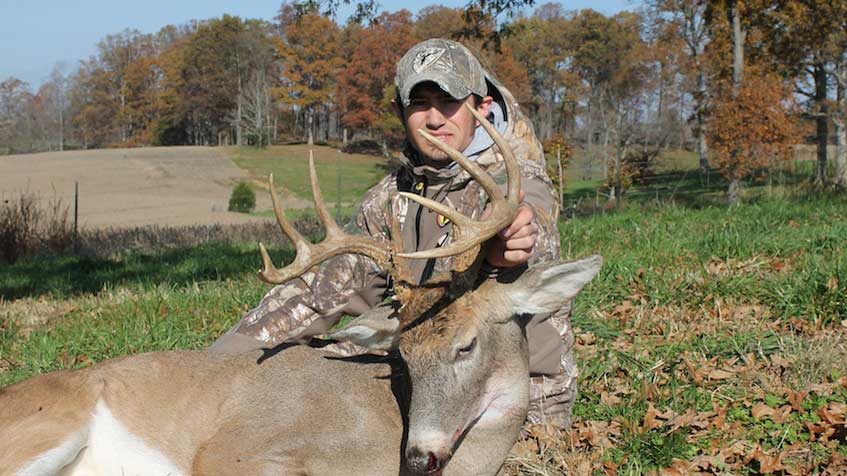
There are numerous choices that are great during the rut. But these three are the best.
Ridge Saddles Between Doe Bedding Areas
A ridge saddle is best defined as a spot where a long ridge dips down to the same—or near to the same—elevation as the valley floor. Think of it as a hole in a hill where both sides taper down. Regardless of the way you imagine it, a ridge saddle is a prime whitetail magnet during the rut.
To understand why it is a good rut stand, you must first understand how bucks travel during this time period: They use paths of least resistance. Bucks took long routes and meticulously planned their day-to-day movements earlier in the year. Now, they are throwing caution to the wind and getting from point A to point B as fast and easy as possible.
These are great spots for an all-day sit. Hike in to a ridge saddle, hang a stand on the downwind side and climb into the tree. Pack enough food and water to last you until dark. I’m not guaranteeing you a shot at a good one. But I am guaranteeing you greatly-increased odds.
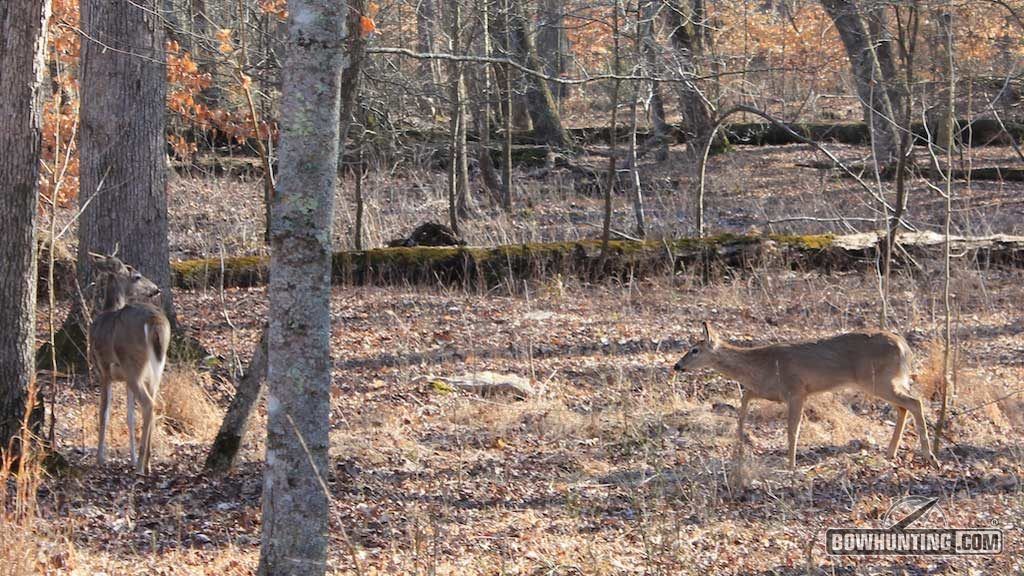
During the rut, it’s all about the does.
Secluded Thicket Near Viable Food Source
This is a spot that often gets overlooked by other hunters. Secluded thickets don’t have to be big in order to harbor mature rutting bucks. They simply need to have the components necessary to give them what they need.
It’s true that bucks are certainly more carefree during the rut than any other time of year. However, they still have a brain. And that brain tells them to hold tight to cover when bedded down. That is why small pockets of really thick cover are great choices. Bucks like this type of security cover and hunters often overlook it.
The best way to set up on this is to get between the thicket and a food source. Another option is to get between it and another bedding area (preferably a doe bedding area). Look at the hourly forecast for barometric pressure, wind, etc. and plan accordingly.
I shot a buck in 2013 using this method. I set up between a 5-acre cedar thicket and a cornfield. Lo and behold, the buck I was after stepped out and I let the air out of him.
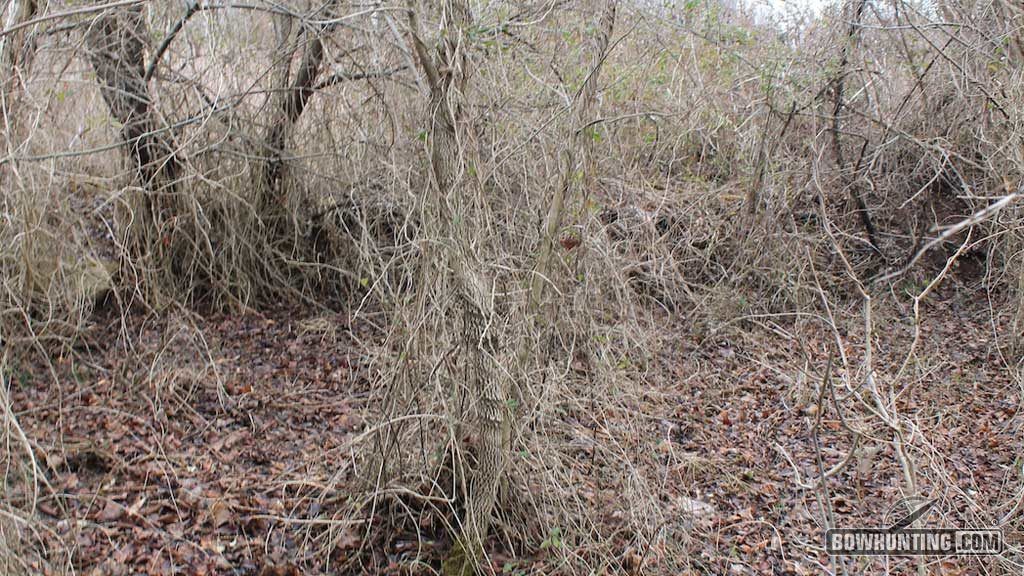
Small, overlooked pockets of cover are deer-magnets during the rut.
Woodlot Pinch-Point Between Two Big Woods
I think this is the best geographical feature on this list. Big bucks often choose the path of least resistance during the rut, but they still like to conceal their presence. Woodlot pinch-points between bigger sections of timber provide both easy access and security.
Looking at an aerial map, a pinch-point is pretty much any geographical feature that forces deer to funnel down to a narrow window of travel. An example of this is where a section of timber starts fairly wide, narrows down to fifty yards, and then becomes wide again. Another example is a small block of timber situated between two major blocks of woods. Deer will use these small, in-between sections of cover as pit stops during their travels.
I’ve killed numerous bucks using this method. My 2014 Kentucky buck was a prime example. He came busting out of a big thicket chasing a doe. They were heading for a big woodlot on the downwind side. I stopped the buck in mid-stride and pulled the trigger. That was that.
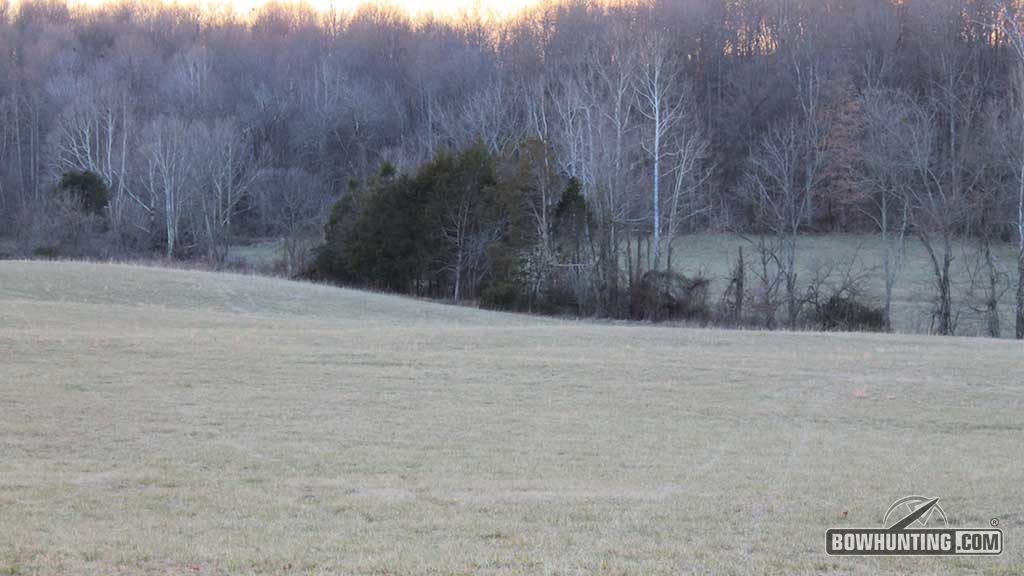
It’s hard to tell in this photo. But about a third of the way across the ridge, a ridgeline saddle dips down to the valley floor. Deer use it a lot.
Bonus Stand: The Decoy Setup
Decoying is a tactic that has gained a lot of popularity throughout the last several years. A lot of hunters are taking dekes to the field and capitalizing on their efforts. But there are a few things to know before doing so.
First, understand that decoying can work in a lot of places, but not everywhere. The key to successful decoying is openness. No, I’m not talking about having a heart-to-heart with anyone. I’m talking about visibility. Bucks can’t commit to a decoy if they can’t see it.
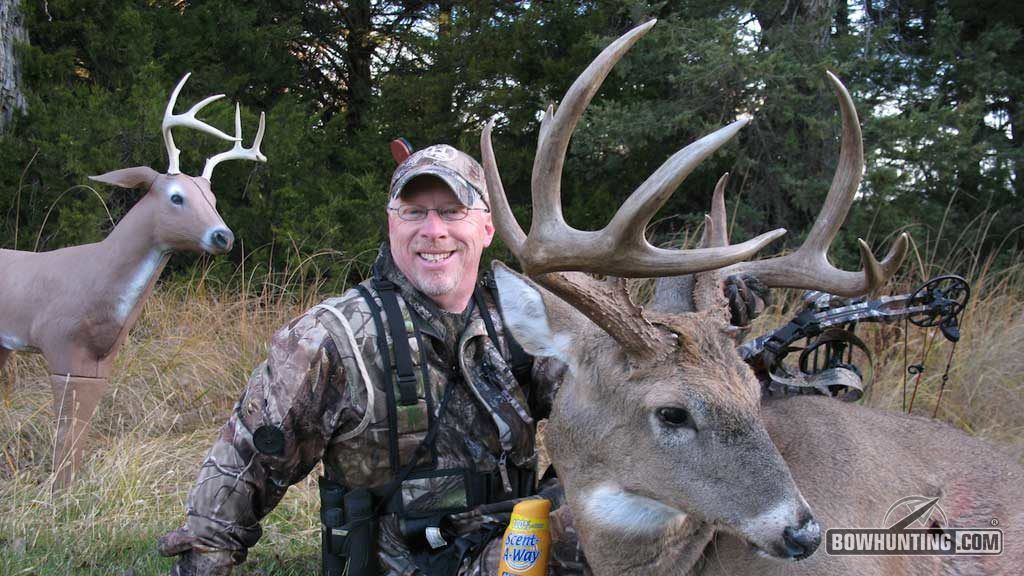
Put it a decoy to work at your setup and you just might be in for the ultimate show in the whitetail woods.
Another thing to remember is placement. Set your decoy up 10 to 15 yards from the base of your tree. Angle it so that bucks will present a broadside or quartering away shot. How do you do this? Set the decoy quartering slightly toward you. Dominant bucks generally circle downwind of the decoy and come into it head-on.
Lastly, think like a buck. Make sure an approaching buck has an exit strategy. Bucks sometimes are hard-pressed to commit when they don’t have a back door to run out of if they get whooped.
Fine-tuning your setup can even take it one step further. Use scent control. Spray down the entire decoy with a scent-eliminating product. Apply associated scents with your decoy of choice. Make sure the decoy setup is as realistic as possible for maximum results.
The best days of the whitetail season are upon us! Take advantage of these three stand setups to put yourself in some prime real estate for punching your next tag.

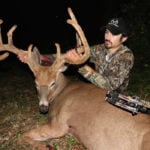 By
By 



